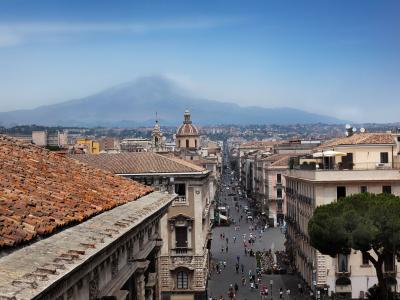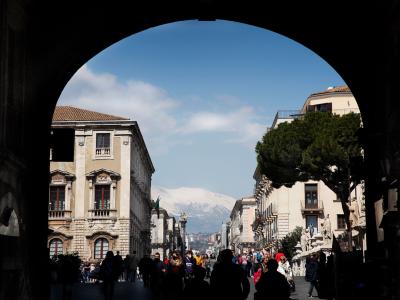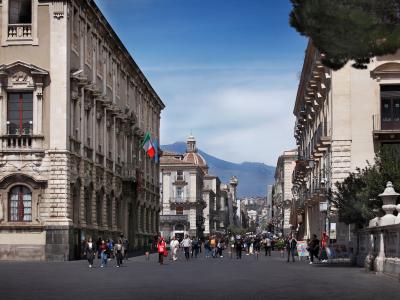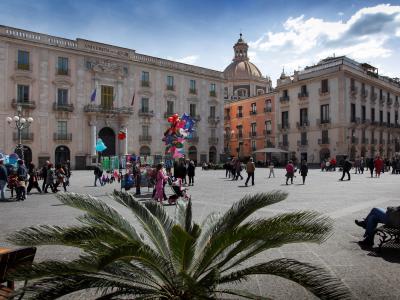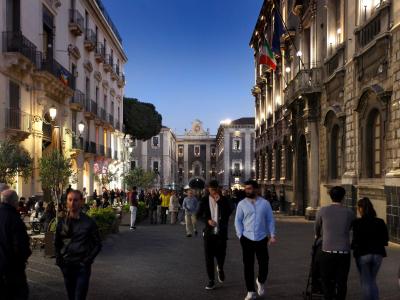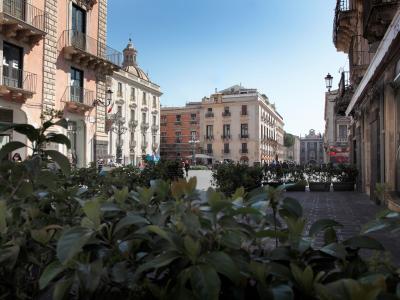Via Etnea is the main street of Catania. It stretches from Piazza del Duomo to Gioeni Park in the northern part of the city. Along its 3-kilometer extension one encounters numerous palaces, churches, and squares of the baroque and neoclassicism of Catania. The first section, up to Piazza Stesicoro, was built during the reconstruction of the city after the 1693 earthquake. The earthquake almost completely destroyed the city and killed three-quarters of the entire population.
Giuseppe Lanza, duke of Camastra superintendent of the rebuilding works, wanted the new Catania to rise according to modern and rational urban planning principles. His futuristic plan for the reconstruction of Catania was approved by the d Council for the rebuilding of Catania on June 28, 1694. It envisaged wide street axes intersecting each other in a straight line.
Starting from the cathedral square until reaching the Aci gate, today's Piazza Stesicoro, he traced the Via Uzeda (first name of Via Etnea), named after the Viceroy.
Between the Duomo and Piazza Stesicoro, there are the Piazza dell'Università and churches and palaces designed by the best creative geniuses of the time who are the creators of Sicilian Baroque, now a World Heritage Site. The road continues to Villa Bellini and then beyond, through the Borgo district, to Catania's ring road built in the 1950s. Today Via Etnea is a pedestrian island from Piazza del Duomo to Quattro Canti and is the city's main shopping street.
Map
VIA ETNEA
Via Etnea, 95124 Catania CT





